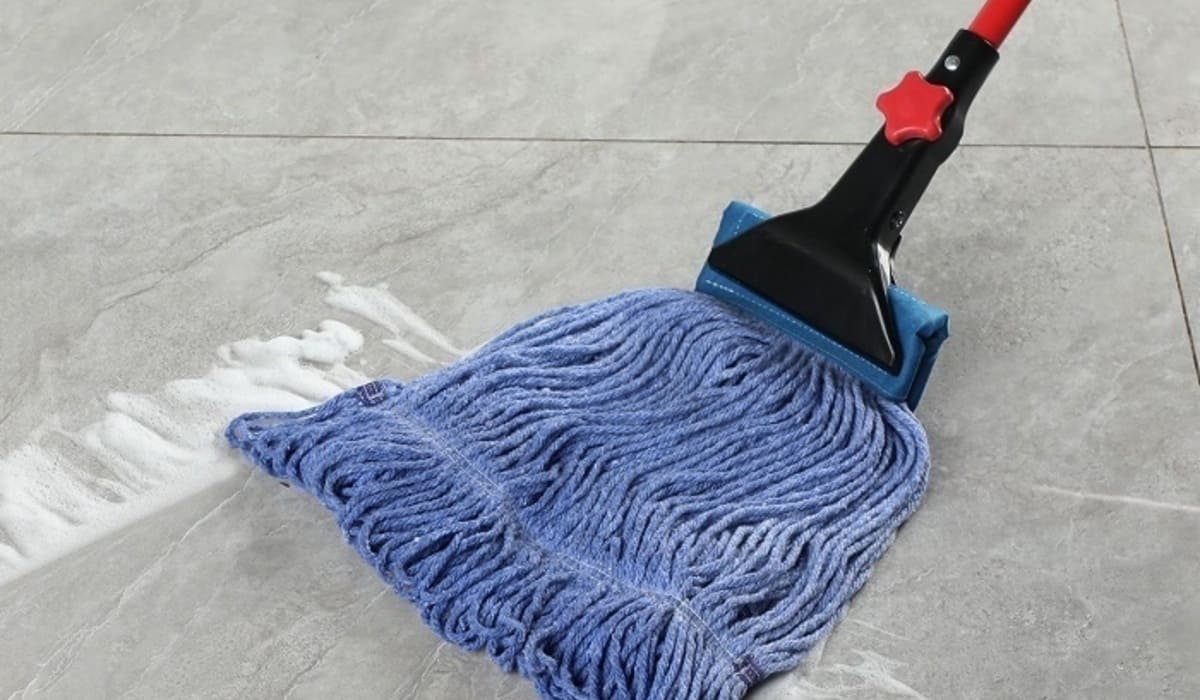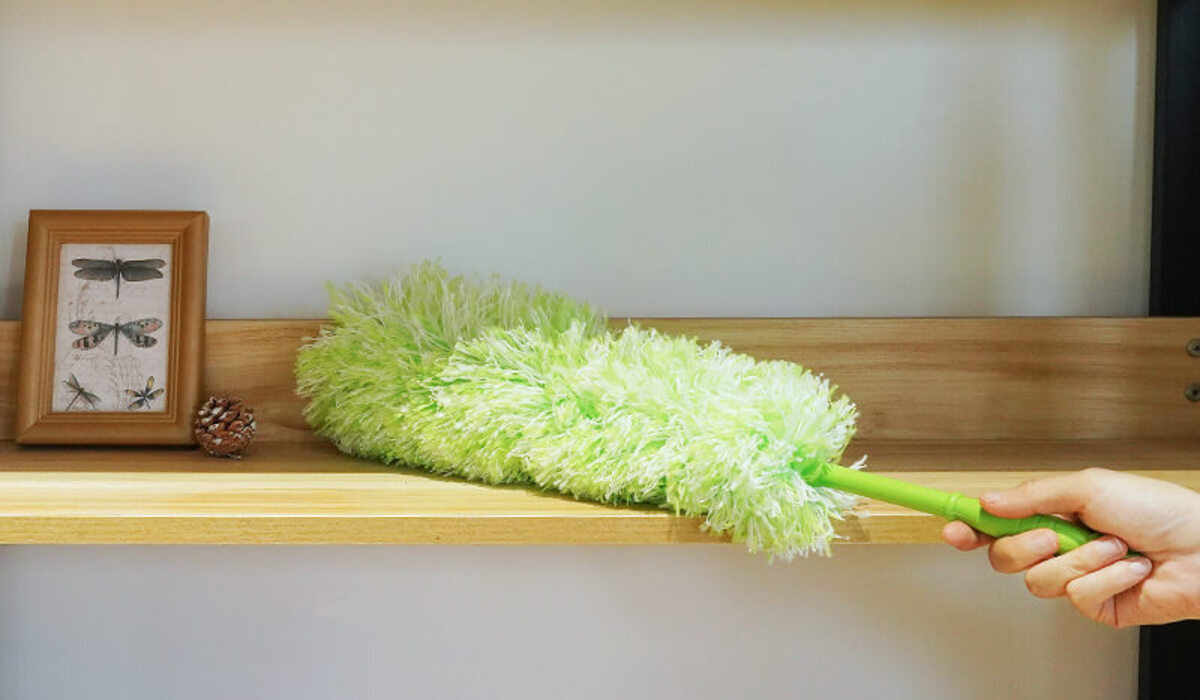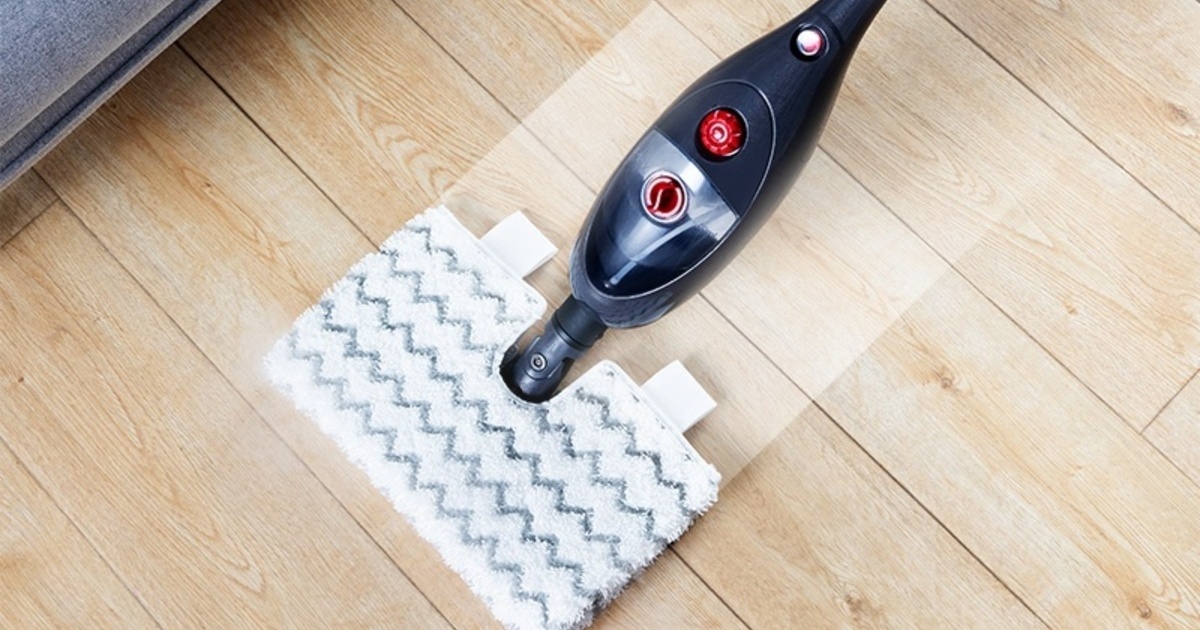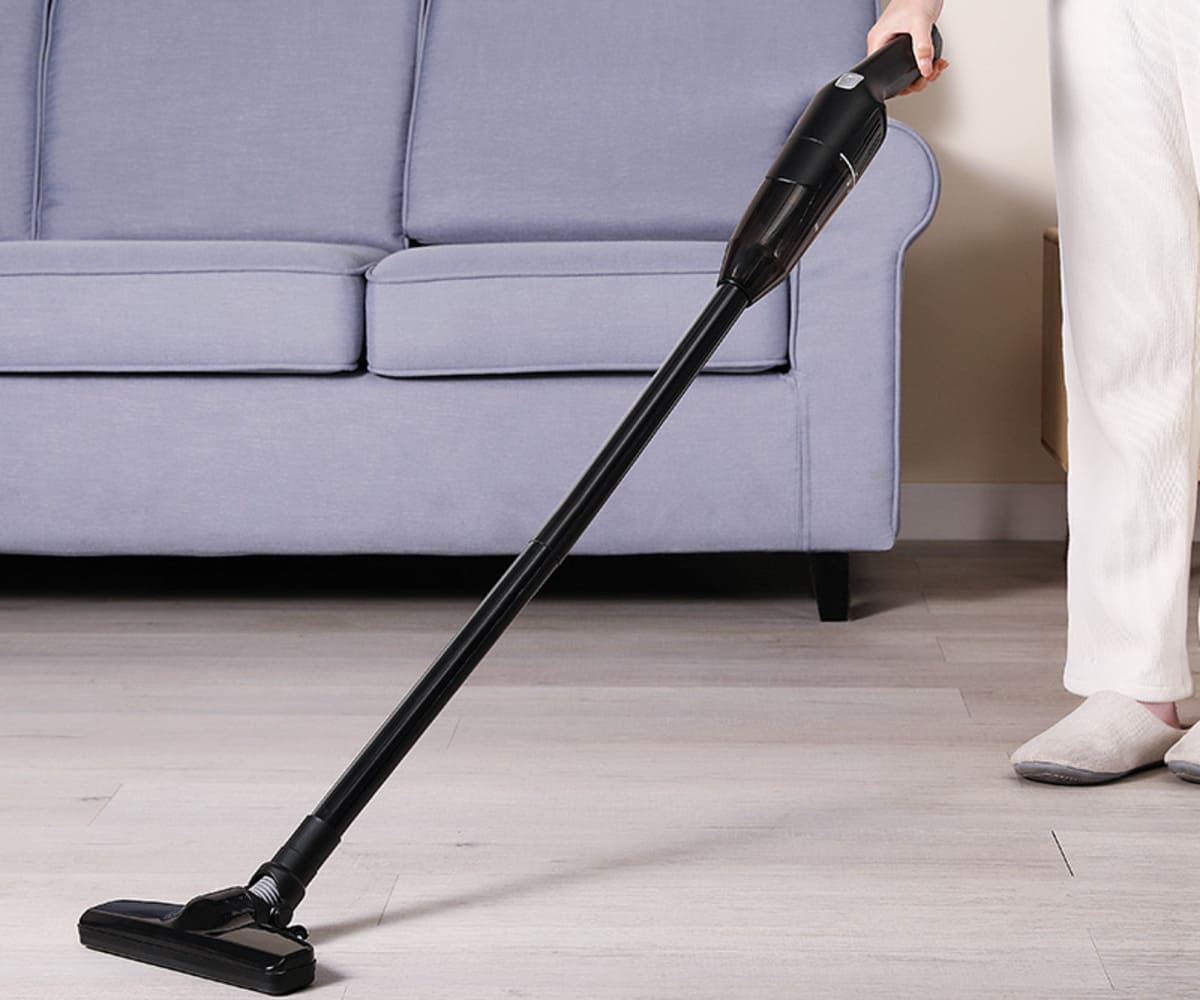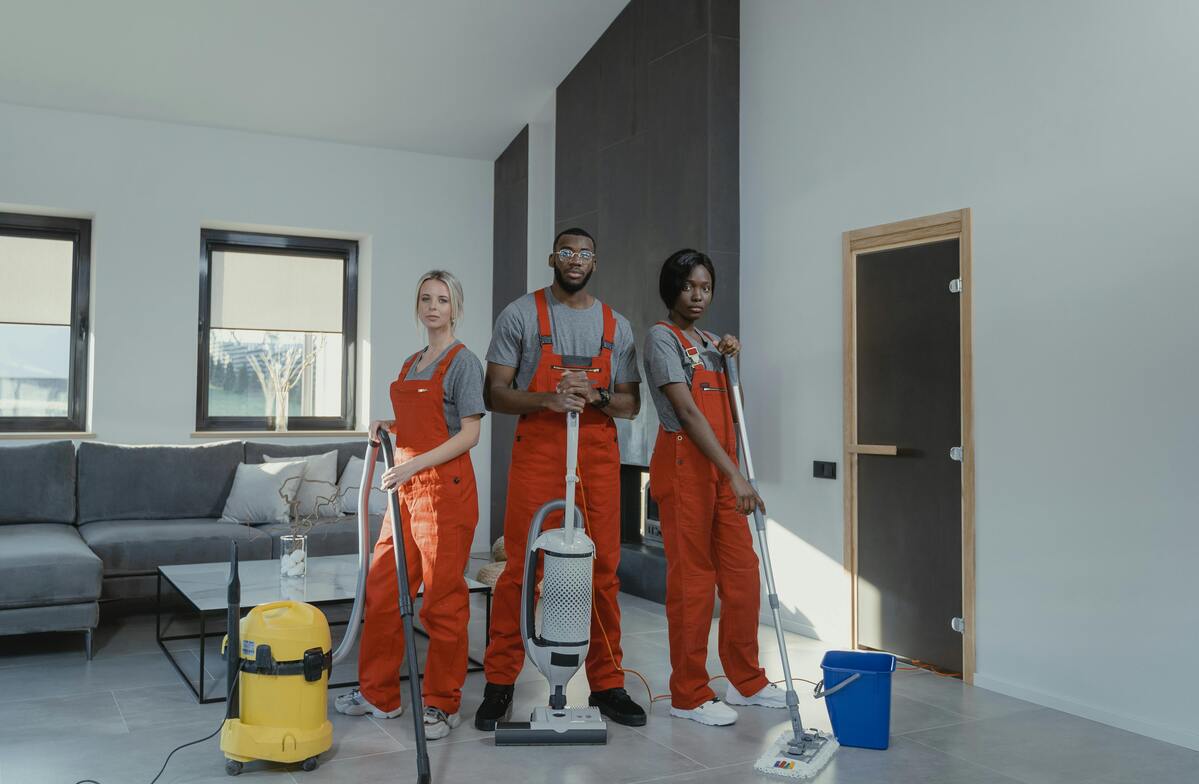Keeping our homes clean isn’t just about appearances; it’s about creating a healthy living environment. And mopping is a very important part of this routine.
There are two main types of mops – wet & dry mops. While wet mops are ideal for deep cleaning and spills, dry mops help deal with dusting and quick clean-ups. You can choose either of them to maintain the cleanliness of your home.
Confused about the one you should choose? Well, let us help you make the right decision. In today’s post, we will talk about the key differences between wet & dry mops and how to use them effectively. Dive in!
What is Dry Mopping?
Dry mopping involves using a mop without water or cleaning solutions to pick up dust, dirt, and loose debris. It is essential to daily cleaning routines, especially for maintaining cleanliness in high-traffic areas.
The dry mop is also known as the dust mop. It typically has a flat or slightly fluffy head made from materials like microfiber, cotton, or synthetic fibers that attract and hold dust.
When & Where to Use a Dry Mop?
Dry mopping is ideal for everyday cleaning, especially in high-traffic areas like kitchens and living rooms. It’s perfect for quickly removing dust, crumbs, and other loose debris, which makes it a great pre-cleaning step before wet mopping.
This method is particularly useful for hardwood and laminate floors, as it helps maintain their appearance without risking water damage.

Types of Dry Mops
Dry mops come in various types, each tailored to different cleaning needs and floor types. Here are the 3 main types:
- Microfiber Dry Mops
Microfiber mops are made with fine synthetic fibers that attract dust and dirt through static electricity. They are highly absorbent and can collect even the smallest particles. These mops are also gentle on surfaces, which makes them suitable for delicate floors.
- Cotton Dry Mops
Cotton fibers are famous for their durability, absorbency, and washability. You can not only clean the floors effectively but also wash the mophead easily. This makes cotton dry mops a suitable option for households.
- Electrostatic Dry Mops
As the name suggests, electrostatic dry mops use static electricity to attract and pick up loose debris. The static pads are often reusable and can be washed after use. This type of mop is excellent for homes with pets, as it captures pet hair efficiently.
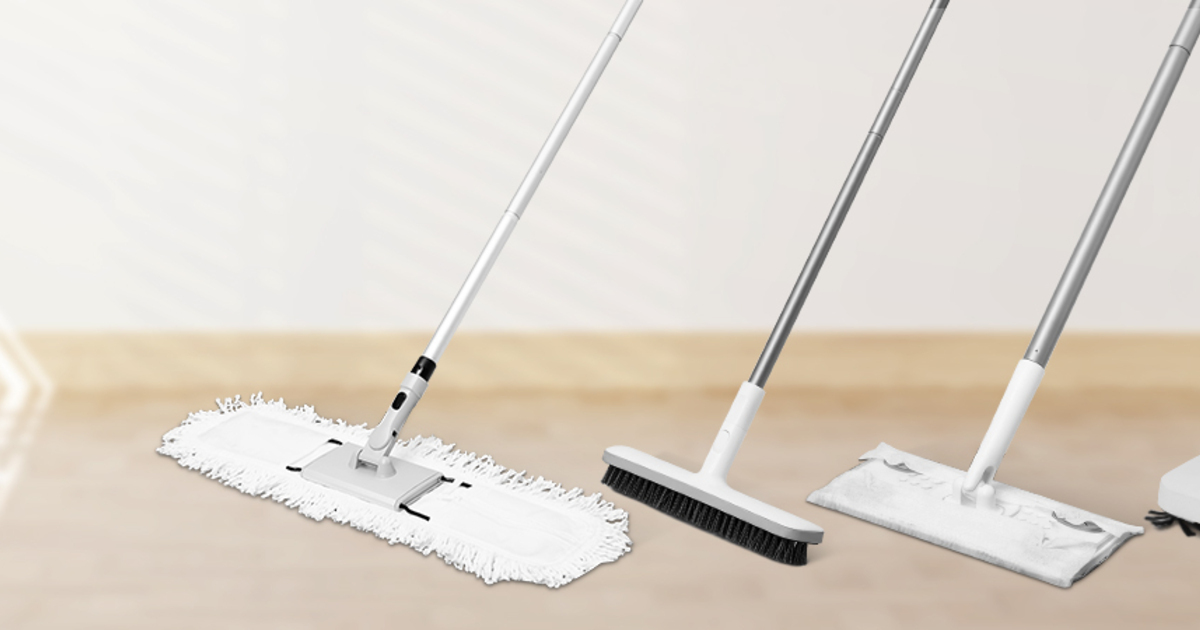
What is Wet Mopping?
Wet mopping involves using a mop with water and often a cleaning solution to clean floors. This method is primarily used to remove stubborn dirt, spills, and stains that dry mopping can’t handle.
The wet mop has an absorbent mophead made from materials like sponge, cotton, or microfiber, which are effective at holding water and cleaning agents.
When & Where to Use a Wet Mop?
Wet mops are perfect for deep cleaning sessions as they effectively remove stubborn dirt and stains from floors. They’re also used for disinfecting floors, especially in kitchens and bathrooms.
These mops work well on both smooth surfaces, such as tiles and vinyl, and rougher surfaces like grout lines and outdoor patios. They’re also ideal for cleaning up after messy activities or when you need to refresh a space.
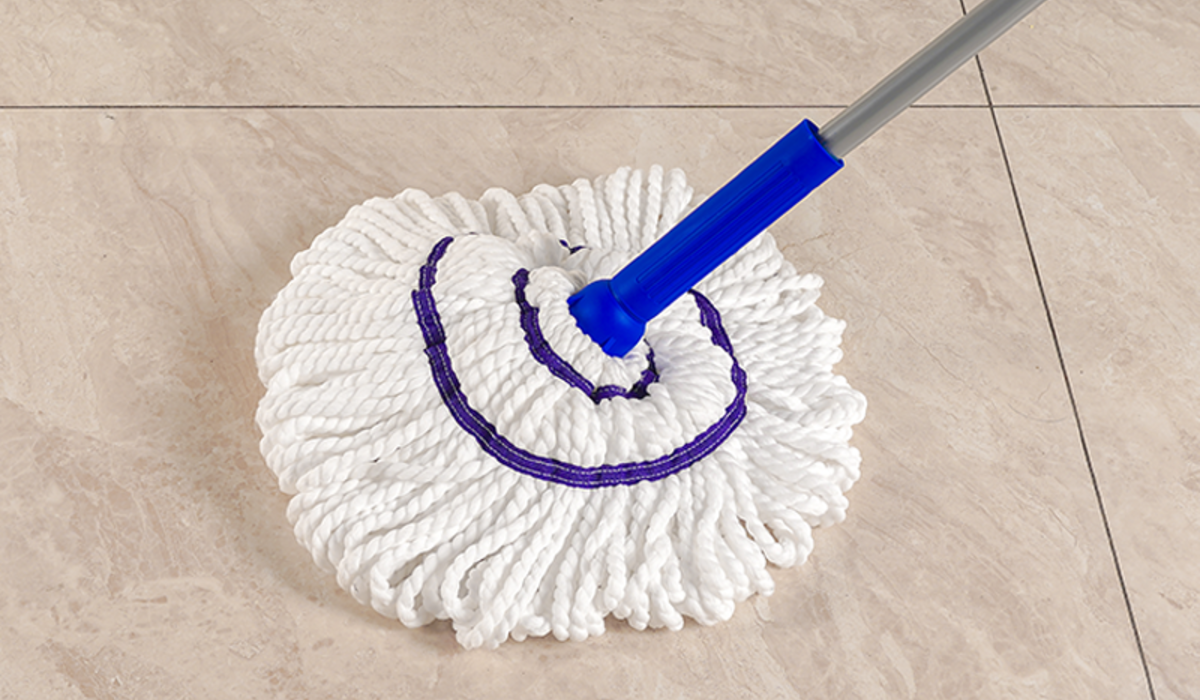
Types of Wet Mops
Similar to dry mops, wet mops are also of different types. However, the classification is based on design style instead of material. This is because a wet mop can be available in cotton, microfiber, or more materials.
- String Mops:
String mops have long, absorbent strands of cotton, microfiber, or synthetic fibers. They are great for heavy-duty cleaning and can soak up a lot of water, which makes them ideal for scrubbing and mopping large areas.
You can find them in two styles; classic cut-end and looped-end mops. The former has loose strings that are great for soaking up spills quickly. However, it doesn’t last as long as looped-end mops.
- Sponge Mops:
Sponge mops feature a rectangular sponge head that is excellent for absorbing liquids and scrubbing floors. They often come with a built-in wringer to squeeze out excess water. This allows you to clean better.
- Flat Mops:
Flat mops have a flat, usually rectangular head with a removable and washable pad made of microfiber or other materials. They are easy to maneuver and great for regular cleaning and mopping.

Wet & Dry Mops: Key Differences
By now, we know the usage and purpose of each mop type. But which one should you choose for your needs? If this question has you confused, don’t worry, and read this detailed comparison!
- Efficiency
Dry mops are efficient for quick clean-ups and removing dust and light debris. They are great for daily maintenance and keeping floors looking tidy, especially in high-traffic areas. However, wet mops excel in deep cleaning and disinfection.
The use of water and cleaning solution gets dirt out of the corners. Meanwhile, the mophead allows you to scrub away the dried stains. This makes your floors a lot cleaner and hygienic than dry mops.
So, dry mops on their own aren’t very efficient (unless your goal is to make things tidy – not clean). It should also be noted that dry mops are typically used as a pre-cleaning step for wet mopping.
- Durability
The durability of dry mops depends on the material of the mop head. Microfiber and cotton mop heads typically last the longest (150 to 200 washes). They can last longer with proper care and maintenance.
Comparatively, wet mops have a shorter lifespan due to frequent exposure to water and cleaning solutions. The mop heads, especially those made of sponge or cotton, can degrade faster and may need more regular replacement.
- Versatility
Dry mops are more versatile than wet mops. They can be used to clean all types of surfaces without worries. You can even dust walls and ceilings with it.
However, when it comes to wet mops, you can only use them on tough surfaces like tiles, vinyl, and concrete. You should not use them on delicate flooring like hardwood, the wetness can damage the wood and lead to mold buildup.
- Maintenance
Dry mops are generally low-maintenance. The mop heads can often be shaken out or vacuumed to remove dust. In some cases, you can also wash the mophead if it’s removable and washable.
But wet mops are an easy target for mold and bacteria. You must wash the mop head thoroughly after each use and dry it. It may also need more frequent replacement due to wear and tear from water and cleaning solutions.
- Cost
Depending on the model, both wet and dry mops cost more or less the same. You can find these mops in the range of $13 to $50+. However, when it comes to operational costs, you will notice that dry mops are cheaper.
A dry mop is 25% faster than a wet mop. Plus, you don’t have to spend money on water, cleaning solutions, and detergents for maintenance.
How To Use a Dry Mop?
Using a dry mop is very simple. All you need is a dry mop and gloves for hand protection. You can also use a dusting solution to improve dirt collection.
Step-by-Step Guide
Before you begin, it’s important to understand how your specific dry mop works, so take a moment to read the manufacturer’s instructions. If your mop has a detachable head or requires specific preparation, make sure it’s properly assembled.
- Pre-Cleaning: Start by preparing the area you’ll be cleaning. Remove any large debris or obstacles that might interfere with the dry mopping process. This step helps prevent damage to your mop and ensures a smoother, more effective cleaning session.
- Start Mopping: Begin mopping from one corner of the room, working your way towards the exit to avoid walking on the freshly cleaned area. Hold the mop at a comfortable angle and gently sweep it across the floor in a back-and-forth or side-to-side motion.
If you’re using a dusting solution, apply it sparingly to the floor or mop head to help trap fine particles.
- Check and Clean the Mop: As you mop, periodically check the mop head for accumulated dust and debris. This buildup can reduce the mop’s effectiveness and may scratch floors. If necessary, take the mop outside to shake off the dust.
- Finishing Up: Once you’ve finished mopping, clean the mop head according to the manufacturer’s instructions. If you’ve washed it, let it dry and then store it in a clean, dry place.
Tips for Effective Dry Mopping
- Mop in Sections: Divide the floor into sections and tackle one at a time. This approach helps you stay organized and ensures that every part of the floor is thoroughly cleaned. Overlap strokes slightly to avoid leaving any areas untouched.
- Complement with Wet Mopping: Use dry mopping as part of a comprehensive cleaning routine. Follow up with wet mopping when needed for deeper cleaning and to remove sticky residues that dry mops cannot handle.
How To Use a Wet Mop?
Since a wet mop needs to be soaked in water, make sure you have a bucket of warm water – preferably with a wringer. Also, grab a bottle of cleaning solution and put on gloves. Follow these steps to use the wet mop properly:
Step-by-Step Guide
- Prepare: Add some cleaning solution to the bucket of warm water and soak your wet mop into it. Use a wringer or your hands to squeeze the excess water from the mop head. Your mop should be damp; not dripping.
- Start Mopping: Start mopping in a corner of the room and work your way toward the exit, so you don’t walk on the freshly cleaned floor. Use smooth, consistent motions to cover the floor evenly. Typically a figure-eight or “S” pattern is used.
- Rinse & Repeat: As you mop, periodically rinse the mop head in the bucket to remove accumulated dirt. Wring it out again before continuing.
If the water in the bucket becomes too dirty, replace it with fresh water and a cleaning solution to ensure effective cleaning and prevent redepositing dirt on the floor.
- Final Mop: For some floors, especially those that show streaks or residue, it might be necessary to go over the area with a mop soaked in clean water only. This step helps remove any remaining cleaning solution, leaving the floor residue-free.
- Dry the Floor: Allow the floor to air dry completely before walking on it. This prevents slips and also avoids trapping moisture, which can lead to damage in certain floor types like hardwood. Using fans or opening windows can help speed up the drying process.
Tips for Effective Wet Mopping
- Avoid Over-Wetting: Over-wetting can damage floors and leave streaks, especially on wood or laminate surfaces. Ensure your mop is damp, not soaking wet, for best results.
- Use the Right Cleaner: Choose a cleaning solution suitable for your specific floor type. For example, use a gentle cleaner for hardwood and a stronger disinfectant for tiled areas.
So, Which One Should You Choose?
All in all, wet and dry mops are equally useful and important cleaning tools. While dry mops are great for daily dusting and quick clean-ups, wet mops are essential for deep cleaning and sanitizing floors.
It’s beneficial to use both methods to maintain a clean and healthy home. Try each to discover what works best for your space and lifestyle. Happy cleaning!




